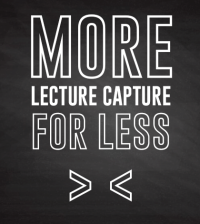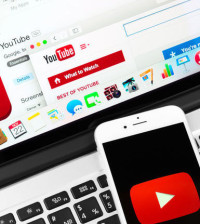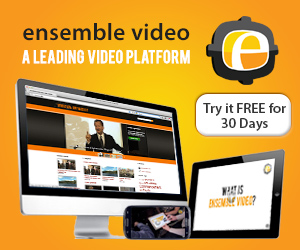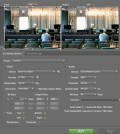YouTube Isn’t Good Enough

YouTube is the proverbial 800-pound gorilla of the video world and it has transformed the way the average Internet user uses video.
With that said, there is no doubt that universities, school districts and businesses have very different needs than average Internet users, so YouTube-like capabilities alone will not cut it. If an university, school or business truly wants to take advantage of a video as a means to enhance teaching, learning and communication within their organization, they need an online video platform with features and functionality that goes well beyond what YouTube and Vimeo can offer.
Here is where I come clean – I tell people we are like “YouTube for a University or Business.” But that really understates what we do. The truth is that YouTube-like capabilities aren’t enough for organizations that are adopting video as a strategic communication and collaboration tool.
Many successful companies, colleges and schools have recognized this shift and developing an online video strategy to create a YouTube-like experience for their stakeholders.
15 Reasons YouTube Falls Short for your University, School or Business:
- Ads: I don’t know if there is any situation where annoying video ads enhance teaching, learning or communication. How many video ads to you sit through on you computer and TV? Ensemble Video will never place video ads on your content because they are intrusive, ineffective and annoying!
- Unrelated – Related Videos: Ever wish you could get rid if those random videos that YouTube deems ‘related‘ to your content, that show up on the right of the screen? I can’t see how uncontrolled ‘related’ content can enhance teaching, learning and communication. Ensemble Video allows you to control your content period.
- Video Dropbox: Have you ever wanted to harvest videos from students, staff members or other video creators in one simple step? There is no option for your students or staff members to easily submit their video to you in a coordinated fashion without create another account. Ensemble Video’s Dropbox feature makes is easy to offer video assignments or run video contents.
- Deployment Options: If you want to secure content or own your content, YouTube isn’t an option. You use their cloud service, you agree to their rules and you lean on them for storage, streaming and backup. Many universities, businesses and medical organizations need more than a simple single account cloud service. Ensemble Video offers a competitive set of deployment options for any organization in the form of Self-Hosted, Cloud-Hosted and Multi-Tenant (consortium hosting) models.
- Blocking: YouTube is blocked in many classrooms and cubicals because of inappropriate materials on the site. Trust me I know their are some content blocking options in YouTube, but most of the blocking methods can’t block specific content. If you want to control your organizations Internet usage, or disable inappropriate content for your users, Ensemble Video offers administrative and technical controls to offer appropriate content to your stakeholders.
- No ownership of Content: When you upload a video to YouTube, who actually owns that video? Well the answer can actually get pretty long and it depends, but the truth is YouTube allows the owner to retain ownership. But what YouTube requires in their terms of service is that users are granting YouTube a non-exclusive, worldwide, perpetual license to freely sub-license, re-distribute, re-publish, and monetize. Sounds like you are turning over the rights to them, that doesn’t happen with Ensemble Video. You and your organization own the content and determine how it is used.
- Inefficient Delivery Options: Many times IT is required to optimize their infrastructure for video, unfortunately you can’t do that with YouTube. Using Ensemble Video’s Media Cache option we can intelligent route content through edge servers which can dramatically reduce the volume of video bandwidth required to stream videos to all your viewers. Cloud viewing requests can be streamed from a cloud media server and on-premise video viewing requests can be streamed from a local media server, pretty slick!
- Security: The privacy options for YouTube are limited. You can mark a video as unlimited to a list of users, but make sure they have a YouTube account and you know what that is. Have fun with that. The privacy options for Ensemble are impressive and flexible. You can restrict videos to users or groups, videos will only play in your LMS or CMS, you can restrict streaming to an IP Address or IP Address Range and you can limit streaming to a number of concurrent users. Ensemble Video’s security and privacy options are excellent for businesses, educational organizations and medical institutions.
- Authentication: The authentication options for YouTube are simple and limited. If your institution uses LDAP (or Active Directory) or Shibboleth authentication you can add either as an authentication source for Ensemble Video. This means you and your users are still using one account for all your services. Another nice option in Ensemble Video is you can automatically create accounts based on LDAP groups, making life easier for everyone involved.
- Curation: In a school district, college or business video has a purpose so many organizations want to manage and curate their video to make their video playlists and video portals more effective. YouTube doesn’t stack up when compared to an online video platform like Ensemble Video. All video publishing can be scheduled, shared, organized and approved by a user or by a group of users in your organization.
- Lack of Management Capabilities: YouTube is not known of its management options, it simple, but not useful for multi-tier organizations like business, colleges or school districts. Usually, organizations want to organize users, content and departments into logical spaces to simplify management and technical support. Ensemble Video offers a number of management options for your organization, you can use the decentralized deployment, a centralized deployment, a hybrid deployment or a consortium deployment option.
- User Roles: YouTube keeps users roles pretty simple, which is great for some organizations. The issues is universities, businesses and schools districts need more. Ensemble Video offers six user roles that are designed to give the organization the ability to control what user can and cannot do within the platform. Administrators can manage access and other system-wide settings, while users are enabled to upload and publish content in their own library. If you want students or employees to have viewer account, Ensemble Video can do that too!
- No Control over Transcoding: I appreciate YouTube simple approach to video conversion, but in a organizational setting one size that fits all for transcoding just falls short. Why? Have you ever tried to count how many different ways people create and obtain media on your campus or in your organization? If you have you will know that one transcoding option will not work for everyone. Ensemble Video can help determine video workflow processes that will ensure your videos are prepared properly for playback on iPads, iPhones, computers and other devices. Additionally, having control over the transcoding workflows mean that users screencasts will be crisp, HD content will be impressive and all your videos will play on a variety of devices and over a variety of networks.
- Videos on YouTube not as useful as on your Website: I get it- there are a lot of eyeballs on YouTube so it can be argued the exposure of posting a video to YouTube is magical. Before you throw all your videos on YouTube, keep in mind there is a ton of competition on YouTube, so how important is your content? If you use an online video platform like Ensemble Video you control where the branding and communication around the video, you can control where it is published, how long it is published and what content is related to it. Also, I recognize you embed a YouTube video on your website, you will always be fighting the video ads and unreleated “related content.” Need more, please review reasons #1, #2, #5 and #6 above.
- Technology Integrations: I admit it – YouTube videos can be published in hundreds of locations online. Where YouTube falls short is it cannot work in concert with a large number of video creation tools and web publishing technologies. Many businesses and educational organizations have capture appliances, video creation software and other video technologies that can feed Ensemble Video, which can then automatically (or manually) feed your LMS, CMS, blog, wiki or website. Ensemble Video was designed to work in concert with users and systems across your organization to enable collaborative sharing and management of an ever-increasing flow of video content.
OK, so now you are thinking we are anti-YouTube. That is not true, we are pro-video and YouTube is a great place to start. It’s vast, it’s free, and it’s a known entity that many people are comfortable with. Unfortunately, YouTube is limited for institutional use. Security and privacy concerns often outweigh the benefits of YouTube for academic content. Many K-12 systems block it, and higher ed institutions and business have no cohesive way to manage multiple YouTube accounts, across their organization.
Ensemble Video offers a way for colleges, school districts and businesses to deploy a secure, unified video content management and publishing system across their institution, and to provide their stakeholders with autonomy within that system. AND Ensemble works with YouTube, allowing users to seamlessly push selected content to one or more YouTube accounts. Upload once, and publish to (and un-publish from) YouTube or any other web location you manage, right from your Ensemble Video Media Library.













You must be logged in to post a comment Login